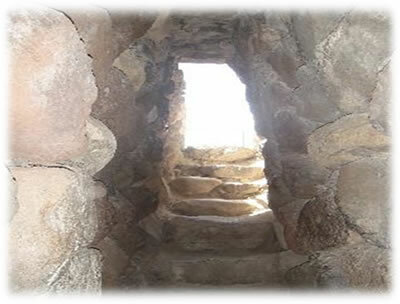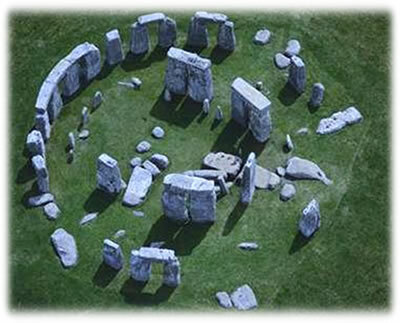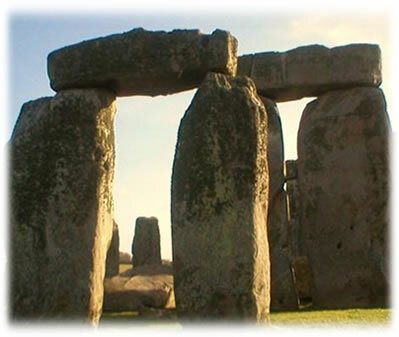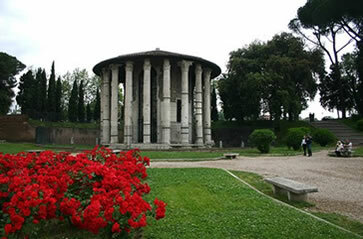In the period of Prehistory, specifically in the Neolithic period, a new scenario emerged, some areas became more favorable to human survival, these were close to the great rivers, whose regular floods and ebbs fertilized and irrigated the ground. The discovery of fire and metal, combined with changes in the environment, allowed man to gradually control nature.
Thus, the man began to abandon the caves and began to build their own homes. These houses were known as Nuragues, which means constructions built in stone, in the shape of an incomplete cone, without any type of mixture of materials to join or cover them.

the interior of the Nuragues in the village of Barumiri, in Sardinia – Italy.
The Dolmens are constructions that are also part of the Neolithic period. These had characteristics quite different from the Nurag constructions. Its architectural formation consisted of two or more large stones stuck vertically into the ground, as if they were walls, and a large stone placed horizontally over them, looking like a roof. The information we have about these buildings is that they were used for mystical rituals, worship of the gods and temples for sacrifices. There are several legends and myths about these buildings, mainly related to the Stonehenge Sanctuary, located in southern England.

One of the most fascinating Dolmens: Stonehenge Sanctuary - South of England
Do not stop now... There's more after the advertising ;)

Stonehenge Sanctuary, the grandeur of the work
Today there are still several explanatory theories, some with more and others with less theoretical foundation. Some reveal that the Dolmens were just tombs, as in almost all the buildings that did not suffer any kind of violation, they were found, through excavations, skeletons or skeleton fragments, these fragments formed a chamber within which the skeleton. Others believe the buildings were like astronomical observatories and sundials.
There is a lot of speculation on the subject and until today History, Anthropology, Archeology and Architecture do not were able to satisfactorily explain the representation and symbology of these constructions of the peoples. Prehistoric. One of the few information gathered during research is that these buildings would not be simply a dwelling.
Anyway, we can say that the constructions Nuragues and Dolmens are considered the first forms of world architecture made by man and the first manifestation of the will and need of societies to create and organize spaces, places, positions; not only in the physical aspects, but also in the symbolic aspects.
By Lilian Aguiar
Graduated in History
Brazil School Team
Would you like to reference this text in a school or academic work? Look:
AGUIAR, Lilian Maria Martins de. "Nuragues and Dolmens constructions in the Neolithic Period"; Brazil School. Available in: https://brasilescola.uol.com.br/historiag/as-construcoes-nuragues-dolmens-no-periodo-neolitico.htm. Accessed on June 27, 2021.

